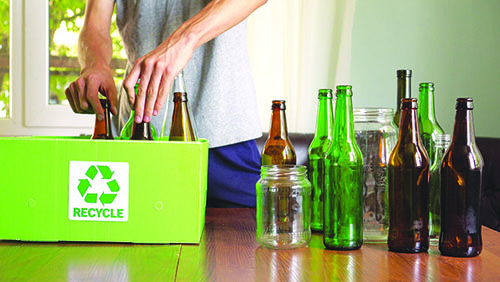At the 14th International Automobile Recycling Congress (IARC 2014) in Brussels, the industry painted a new picture of the future of sustainable automobile production and recycling.
 New regulations at EU level as well as innovations in the field of auto manufacturing are leading to major changes in the recycling of numerous materials.
New regulations at EU level as well as innovations in the field of auto manufacturing are leading to major changes in the recycling of numerous materials.
At the IARC, representatives of major recycling companies, car manufacturers, authorities and researchers discussed how the industry can – and indeed must – rise to meet the challenges of upcoming new regulations and changing trends in auto manufacturing.
New energy sources and drive systems demand innovative, sustainable recycling processes. The increasing electrification of drive assemblies in cars calls for technologies capable of recycling new types of manufacturing materials and electric drive components when dismantling the vehicles at the end of their life cycles. The process produces various metal compounds and electronic wastes, which can then be recovered and sold to a new market to generate added value.
“Business with rare metals will reach new dimensions with the paradigm shift to renewable sources of energy,” said Roger Burri, manager of Air Mercury AG, a company that specializes in reusing metals obtained from recycling processes.
E-mobility will be the buzzword of the future, Olivier François, vice chairman of the IARC Steering Committee, is also convinced. How can we replace our limited supply of fossil fuels in the medium term, and how can we generally reduce the consumption of and the demand for energy in society?
In his speech, Peter Kronschnabl, president and chief executive officer of BMW in Belgium and Luxembourg, explained ways of utilizing new materials in the field of automotive manufacture and the transformation that is leading to the use of new energy systems. He even brought along his favorite example for test drives – the BMW i3. Powered by an emission-free electric motor, the BMW i3 provides urban mobility wherever it is really important such as in city centers that have long since introduced driving restrictions for certain types of vehicles.
New high-voltage lithium-ion batteries enable electric vehicles to cover greater distances without refueling, but also raise new questions about the end-of-life disposal of their components. In this field, the industry still needs to develop suitable solutions, especially since the EU is introducing new regulations that set tougher standards for vehicle recycling. With the new End of Life Vehicles Directive, as of January 2015, the EU requires that 85 percent of a car’s components are either recycled or reused in the production process – and that 95 percent of the production materials are recovered in the recycling process and disposed of professionally. However, the question of whether and, in particular, how these targets and specifications can be implemented, was not conclusively answered at the IARC.
Published in the June 2014 Edition of American Recycler News







